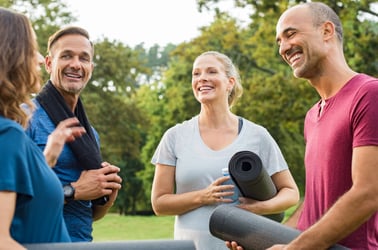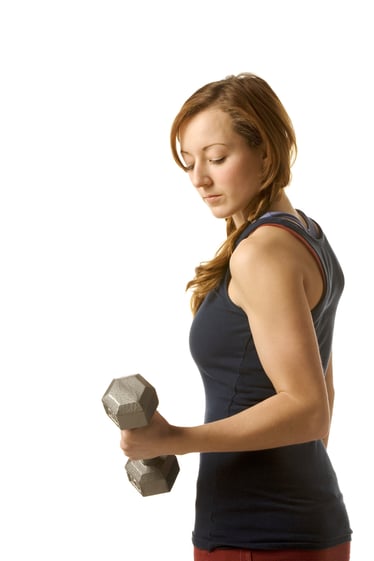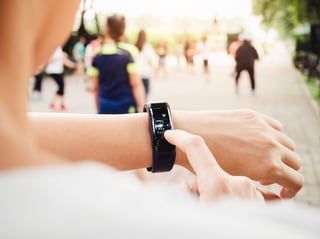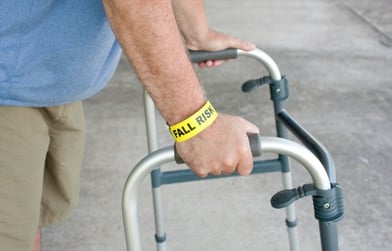 You might have heard that yoga is great for flexibility and a great opportunity to meditate. Beyond those benefits, there is much more to yoga than one might think. As a yogi myself, I have been consistently practicing this exercise for 9 months and have seen great changes in my mental health as well as physical changes. This form of exercise challenges me to tap into my inner strength and capabilities each time I step onto my mat. This practice pushes me to become the best version of myself, both physically and mentally.
You might have heard that yoga is great for flexibility and a great opportunity to meditate. Beyond those benefits, there is much more to yoga than one might think. As a yogi myself, I have been consistently practicing this exercise for 9 months and have seen great changes in my mental health as well as physical changes. This form of exercise challenges me to tap into my inner strength and capabilities each time I step onto my mat. This practice pushes me to become the best version of myself, both physically and mentally.
Practicing yoga is great for overall mental and physical health, and when you practice it consistently, it is easy to see those changes not just in your physical capabilities, but also your mental awareness. Science and research show how yoga improves health, heals our muscles, and relieves joint aches and pains. Let’s dive into some of the benefits that yoga offers to someone who incorporates this practice into their life.
Increases Strength
Yoga is a great form of exercise for strengthening and building muscle, as well as increasing endurance. Yoga increases whole-body strength, but especially in areas we tend to neglect, like the core, lower back, and glute areas. When these areas of our body are strong, it protects us from injury and pain.
Improves Posture
Sitting at a desk all day and having a career that might put a strain on your neck and back can cause poor posture. Different yoga poses may reverse the effects that day-to-day activities may have on our bodies.
Relaxes Your System
Yoga encourages slow breathing and relaxation, all while focusing on the present. As our system slows down, the parasympathetic nervous system, also known as the “rest and digest” system, turns on. This decreases blood pressure while increasing blood flow to all the major organs in our bodies. In addition to yoga encouraging your body to relax, it can also ease the mind, slowing down daily stressors, fear, and worries. In time when you practice shutting off your racing mind, you are more likely to live a healthier and longer life.
Regulates Your Adrenal Glands
Yoga is known to lower cortisol levels. When a person has too much cortisol in their body, it may affect memory, cause depression, worsen osteoporosis, and cause high blood pressure. When cortisol levels spike up, people crave foods when they are angry, tired, stressed, or upset. This causes an increase in the amount of calories people consume, as well as weight gain.
Local to Indianapolis? NIFS offers yoga as a group fitness class. Read this blog to learn more about choosing the right class, see the Group Fitness Schedule for times, and join us for a workout that brings many physical and mental benefits.

%20and%20dog%20GettyImages-890287958%20(1).jpg?width=300&name=Senior%20(male)%20and%20dog%20GettyImages-890287958%20(1).jpg)

 Six months ago, a friend dared me to give up cardio for three months and focus on strength training. My initial response was, “No way! I’m a runner, I’ve always been a runner. There is no better exercise than running!” My friend was relentless and eventually I agreed to take a brief hiatus, although I was convinced that I would turn into a mushy ball of goo if I didn’t get in my daily run.
Six months ago, a friend dared me to give up cardio for three months and focus on strength training. My initial response was, “No way! I’m a runner, I’ve always been a runner. There is no better exercise than running!” My friend was relentless and eventually I agreed to take a brief hiatus, although I was convinced that I would turn into a mushy ball of goo if I didn’t get in my daily run. 
 Every year the
Every year the 
 Obesity is an epidemic in our society today. Those who are obese have greater risk of diabetes, coronary artery disease, stroke, and arthritis.
Obesity is an epidemic in our society today. Those who are obese have greater risk of diabetes, coronary artery disease, stroke, and arthritis.
 Twenty years ago, would you have ever thought you would be checking out the break-room bulletin board and coming across a yoga class being offered in the office or onsite gym? Chances are it would have been highly unlikely, not to mention overlooked because it did not have the buzz or trendy reputation it does now.
Twenty years ago, would you have ever thought you would be checking out the break-room bulletin board and coming across a yoga class being offered in the office or onsite gym? Chances are it would have been highly unlikely, not to mention overlooked because it did not have the buzz or trendy reputation it does now.


 Many Continuing Care Retirement Communities (CCRCs) offer a variety of group fitness classes to their residents. The community personnel who hire the group fitness instructors (GFIs) may benefit from a few pointers on hiring standards beyond someone’s personality alone. Don’t get me wrong, the right personality and ability to build relationships with residents is crucial for making a class successful. However, a narrow focus on personality alone may not provide your residents with the maximum benefits of participating in the activity and could create a dangerous environment.
Many Continuing Care Retirement Communities (CCRCs) offer a variety of group fitness classes to their residents. The community personnel who hire the group fitness instructors (GFIs) may benefit from a few pointers on hiring standards beyond someone’s personality alone. Don’t get me wrong, the right personality and ability to build relationships with residents is crucial for making a class successful. However, a narrow focus on personality alone may not provide your residents with the maximum benefits of participating in the activity and could create a dangerous environment.
 Preparing for a summer vacation? Be sure to bring workout attire! Instead of letting your exercise routine take off several days as well, check out some of the following fitness ideas and embrace the opportunity to be rejuvenated both physically and mentally.
Preparing for a summer vacation? Be sure to bring workout attire! Instead of letting your exercise routine take off several days as well, check out some of the following fitness ideas and embrace the opportunity to be rejuvenated both physically and mentally. Your joints play an important role in all of life’s activities. They connect bone to bone, which allows your body to move during everything from sports and exercise to everyday functions such as playing with kids, lifting groceries, performing yard work, and even sitting at a desk.
Your joints play an important role in all of life’s activities. They connect bone to bone, which allows your body to move during everything from sports and exercise to everyday functions such as playing with kids, lifting groceries, performing yard work, and even sitting at a desk.